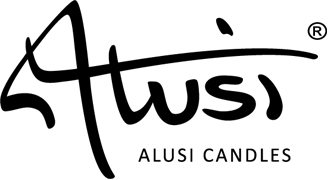An Illuminating Candle History
23. Dec 2015Candles today are so ubiquitous that it is nearly impossible to imagine a time without them. And it’s true, candles have been used for illumination for more than 5000 years, making their exact moment of invention hard to pinpoint. However, archaeological records and written histories have provided some key dates in the development of these home décor standards.
Though the exact date or place of invention can be debated, one thing is for sure. Through their first centuries – millennia, even – of use, candles were primarily practical objects. Their main purpose of providing light was followed by their use in rite and ritual, and it wasn’t until modern times that candles began to be seen as decorative objects.
Join us in a brief history of candles throughout the ages…
Ancient Times – Before Common Era

3000 BCE – tombs at Thebes show carvings of candles on plate-like holders, suggesting beeswax candles with wicks were used in Crete and Egypt at this time
500 BCE – Romans make dipped candles from tallow (a rendered form of animal fat)
403–221 BCE – excavated bronzeware from the Warring States period in China feature a pricket thought to hold a candle
221–206 BCE – evidence of candles made from whale fat in China (Qin Dynasty)
165 BCE – Jewish Festival of Lights originates
40 BCE – Jizhupian dictionary hints at candles made of beeswax being used by statesman Zhou Yi
Ancient Times – Common Era

1st century CE – indigenous people from Oregon to Alaska use oil from the eulachon (or “candlefish”) for illumination by putting the dried fish on a forked stick and lighting it
100s CE – oldest known candle fragment, found at Vaison (near Avignon, France), dates to now
300s CE – excavated earthenware bowl from this era has a hollowed socket where traces of wax were found; Emperor Constantine is first reported to have called for the use of candles during an Easter service
70 CE – the first Jewish temple menorah is etched in relief on the Arch of Titus outside the Roman Forum, commemorating the spoils taken by Rome in the conquest of Jerusalem
400s CE – molds are first employed for pouring molten wax
700s CE – novelty Chinese candles have weights built into the sides, so that as the candle melts the weights fall off and make a noise as they land in a bowl
Medieval Commercial Development

1200s – candle-making becomes a guild craft in England and France
1292 – 71 chandlers (candlemakers) are listed on tax rolls of Paris
1300 – the Tallow Chandlers Company of London forms
1330 – the Wax Chandlers Company forms in London
1400s – first modern candle mold created in Paris
1415 – Tallow candles used in street lighting
1456 – Tallow Chandlers Company is granted its own coat of arms
1484 – the Wax Chandlers Company acquires its charter
Industrial Revolution Innovations

1700s – the whaling industry booms, ushering in the harvesting of sperm whales for their “spermaceti” (a white, waxy liquid found in their head cavity that produces candles valued for brightness, longer burning time and slightly sweet odor), creating the first “standard” candles
1761 – coronation of George III shows use of candles by the wealthy, with groups of 3000 candles linked together with threads of gun cotton and quickly lit in 30 seconds (resulting in the showering of the King’s guests with hot wax and burning thread)
1789 – English naturalist Gilbert White, in The Natural History of Selborne, describes how the labouring class made candles from pig fat and reed grasses (produces a less pleasant odour than the favoured mutton or beef tallow of the time)
1800 – colza oil, similar to rapeseed oil, is discovered to produce clear, smokeless flames, becoming an even cheaper alternative to spermaceti
1800s – braiding the wick is invented (the wick bends away from the flame and burns to ash, preventing the need to snuff and trim as the candle burns down)
1811 – French chemists Michel Eugène Chevreul and Joseph-Louis Guy-Lussac patent stearin, a substance derived from animals but with no glycerine content (unlike tallow), making it hard and durable with a convenient melting range (54–72.5°C)
1825 – introduction of stearin candles
1827 – English chemist and apothecary John Walker produces and sells the first matches, produced by coating a stick with antimony sulfide, potassium chlorate, gum and starch
1834 – Joseph Morgan introduces the first candle-molding machine (allowed for continuous production by using a cylinder with a moveable piston to eject candles as they solidified – producing about 1500 candles/hour)
1850s – James Young distills paraffin wax from coal and oil shales and develops a commercially viable method of production (paraffin processed by distilling residue left after crude petroleum was refined)
1854 – George Wilson distills the first petroleum oil
1859 – “Colonel” Edwin Drake’s oil well in Titusville, Pennsylvania, becomes a vast source for paraffin wax
1879 – incandescent light bulb is invented by Joseph Swan and this, combined with the previous introduction of kerosene lamps, leads to decline of the candle industry
1880s onward – candle sales decline and they become marketed more as a decorative item
Modern Resurgence

1990s – new types of waxes are developed due to unusually high demand – wax blends reign supreme and producers (like us at Alusi® candles!) continue to experiment with shape, scent, wax, wick and colour




